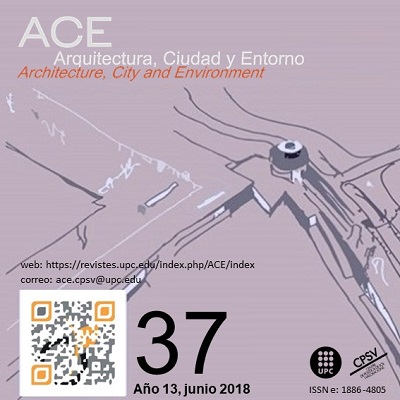Conceptual analysis of walking distance to transit: towards a more integrative approach
DOI:
https://doi.org/10.5821/ace.13.37.5134Keywords:
Public Transport, walking, accessibility, urban designAbstract
Objective
This article provides an original review to analyse the concept of walking distance and its evolution over time as estrategy for the public transport integration in the urban environments.
Methodology
It has been undertaken a literature review about: the evolution in the different approaches on the concept of walking distance; its implications within the context of different transport modes; the type of measure in use; the distances considered; and the factors linked to walking distance that are taken into account.
Conclusions
The results obtained show how light rail systems and urban bus transit have a greater urban integration potential. These transport modes tend to consider walking distance based on survey systems and considering a high number of factors linked to walking distance. The article concludes making clear the need to incorporate indicators related to the urban environment and the population in the assessment of the accessibility based on walking distance to public transport. This is expected to promote more environmentally integrated transport networks able to better meet the needs of users.
Originality
Despite the long history of town and transport planning, there is still little academic review on the concept of pedestrian distance to public transport and its implications.Downloads
Published
Issue
Section
License
| INTELECTUAL PROTECTION CRITERIA |
At this moment, it is count with the "Oficina Española de Patentes y Marcas", while global protection it is being processed by the World Intelectual Property Organization (OMPI/WIPO). Nevertheless the International Standard Serial Number Office (ISSN) has given the following numbers ISSN: 1886-4805 (electronic version) and 1887-7052 (paper version). All articles will be peer reviewed, using double blind reviewing. |
| COPYRIGHT |
The article contents and their comments are authors exclusive liability, and do not reflect necessarily the journal editor commitee's opinion. All ACE published works are subject to the following licence CC BY-NC-ND 3.0 ES http://creativecommons.org/licenses/by-nc-nd/3.0/es/ It implies that authors do not hold nor retain the copyright without restrictions but only those included in the licence. |


































